The document discusses RoboCup@Home, a competition for domestic service robots that focuses on human-robot interaction and mobile manipulation. It describes some of the standardized tasks robots must complete, including delivering drinks in a cocktail party setting and retrieving objects in an unknown environment like a restaurant. The document also discusses challenges like navigation, manipulation of everyday objects, and interacting with humans in noisy environments. Finally, it provides examples of how imitation learning and learning unknown words could help robots perform household activities.
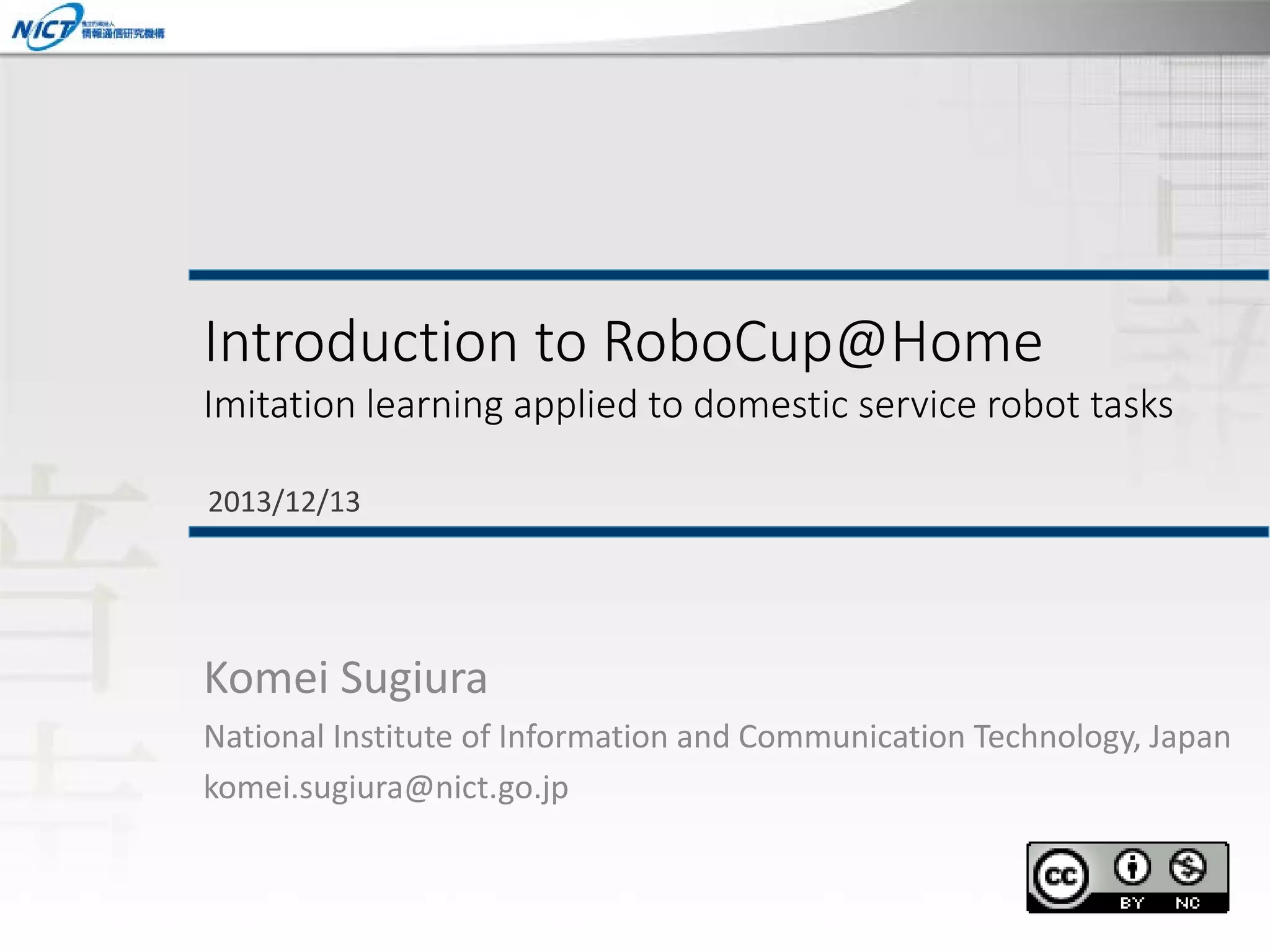
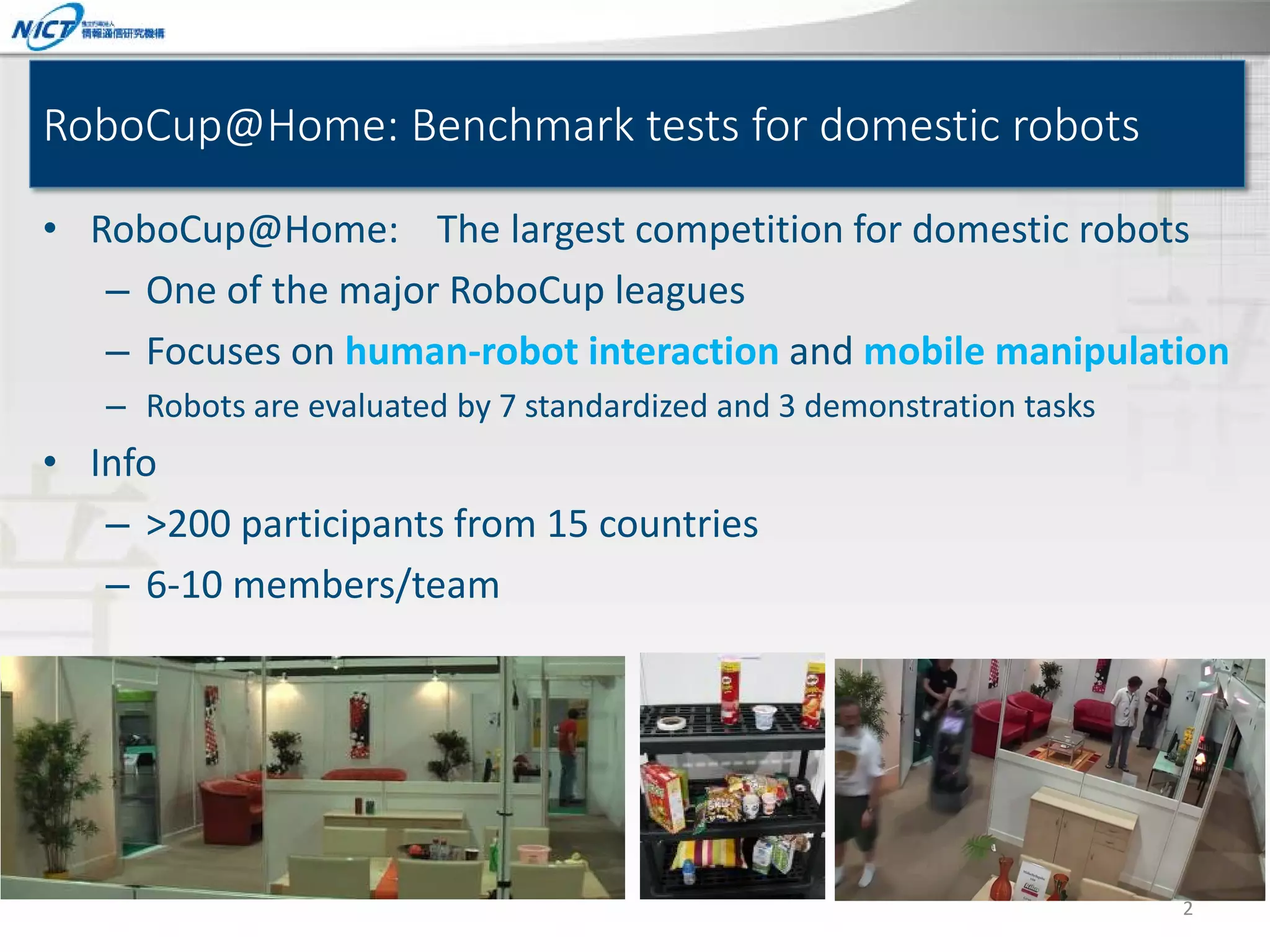
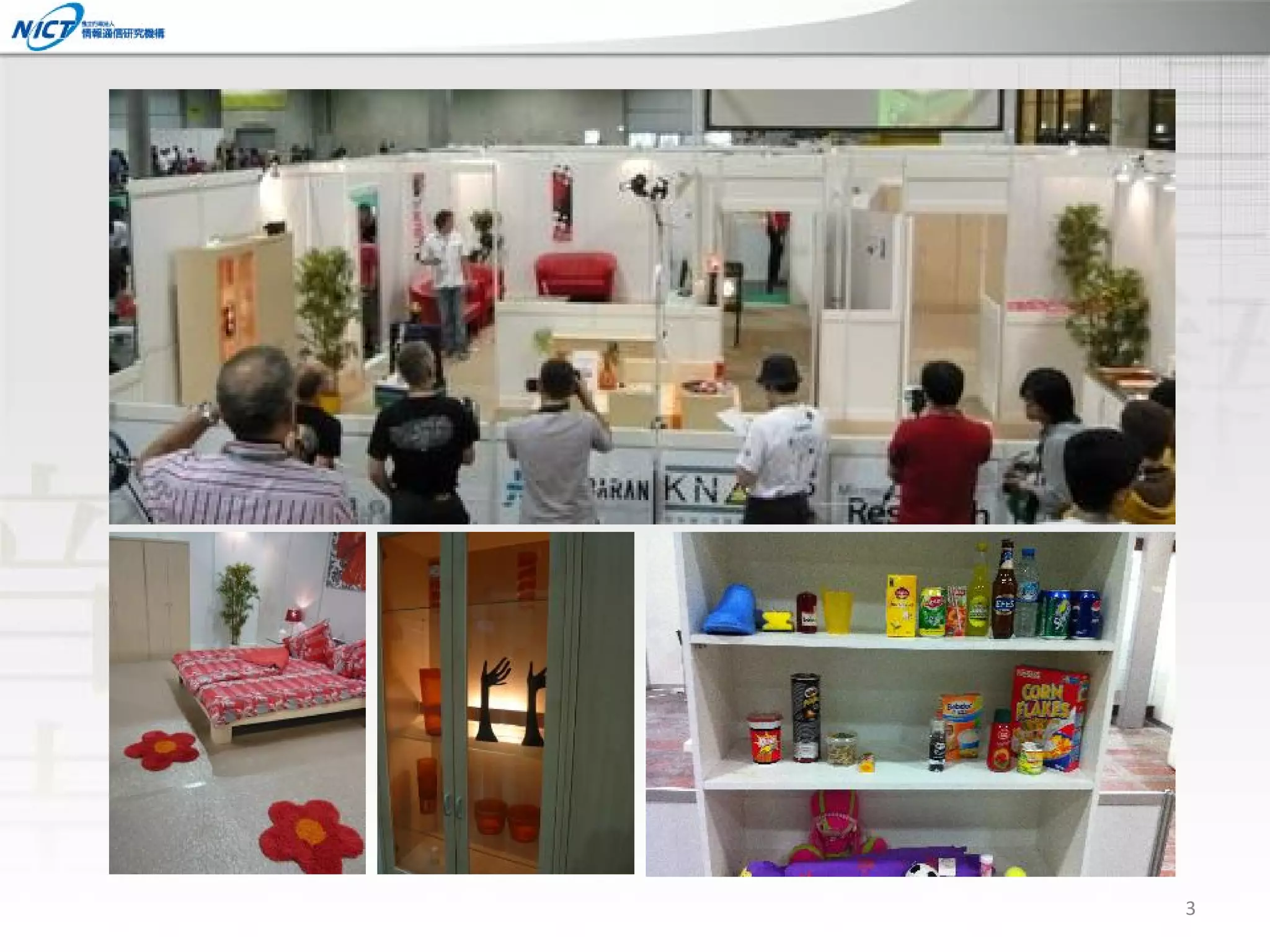
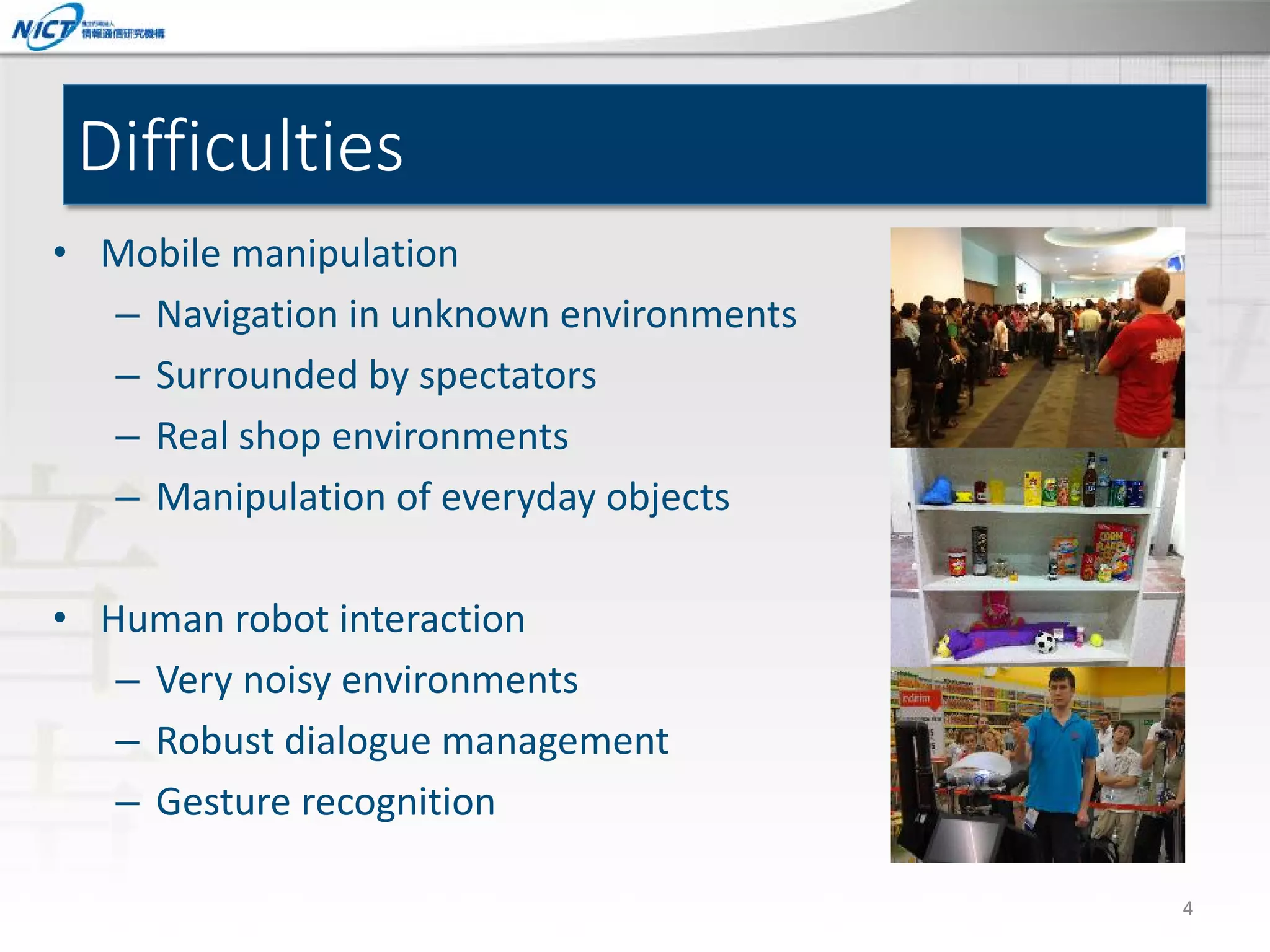
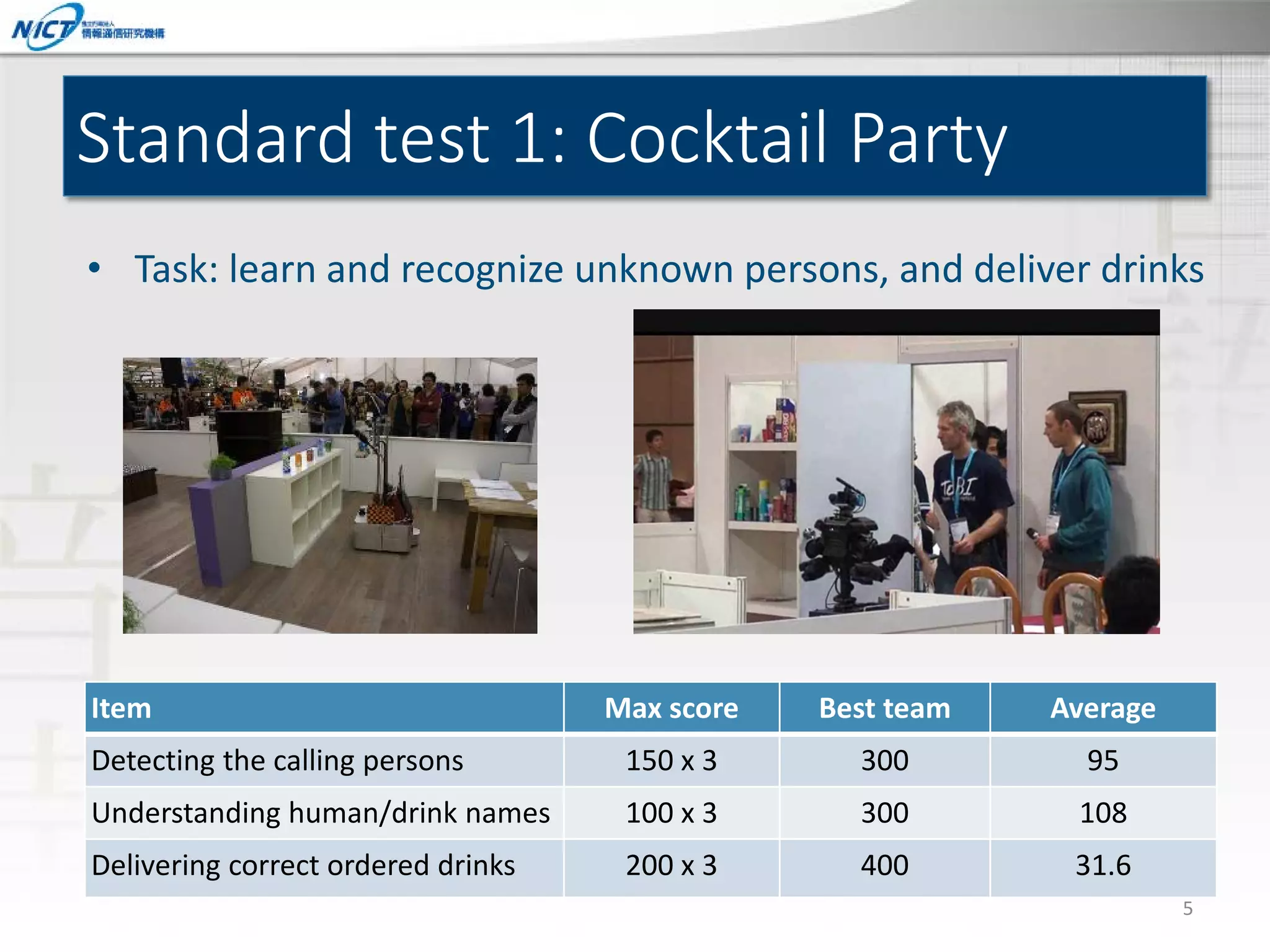
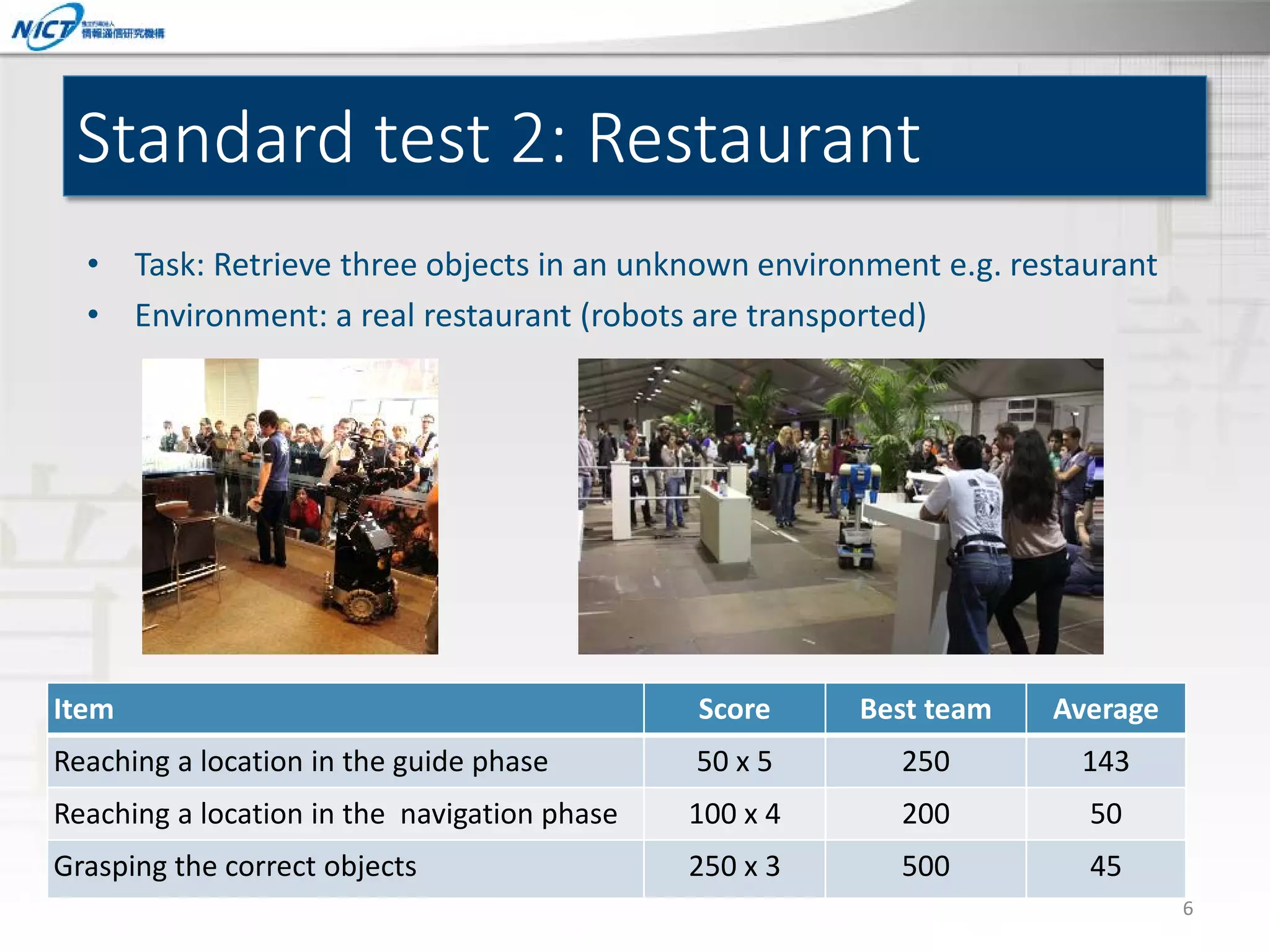
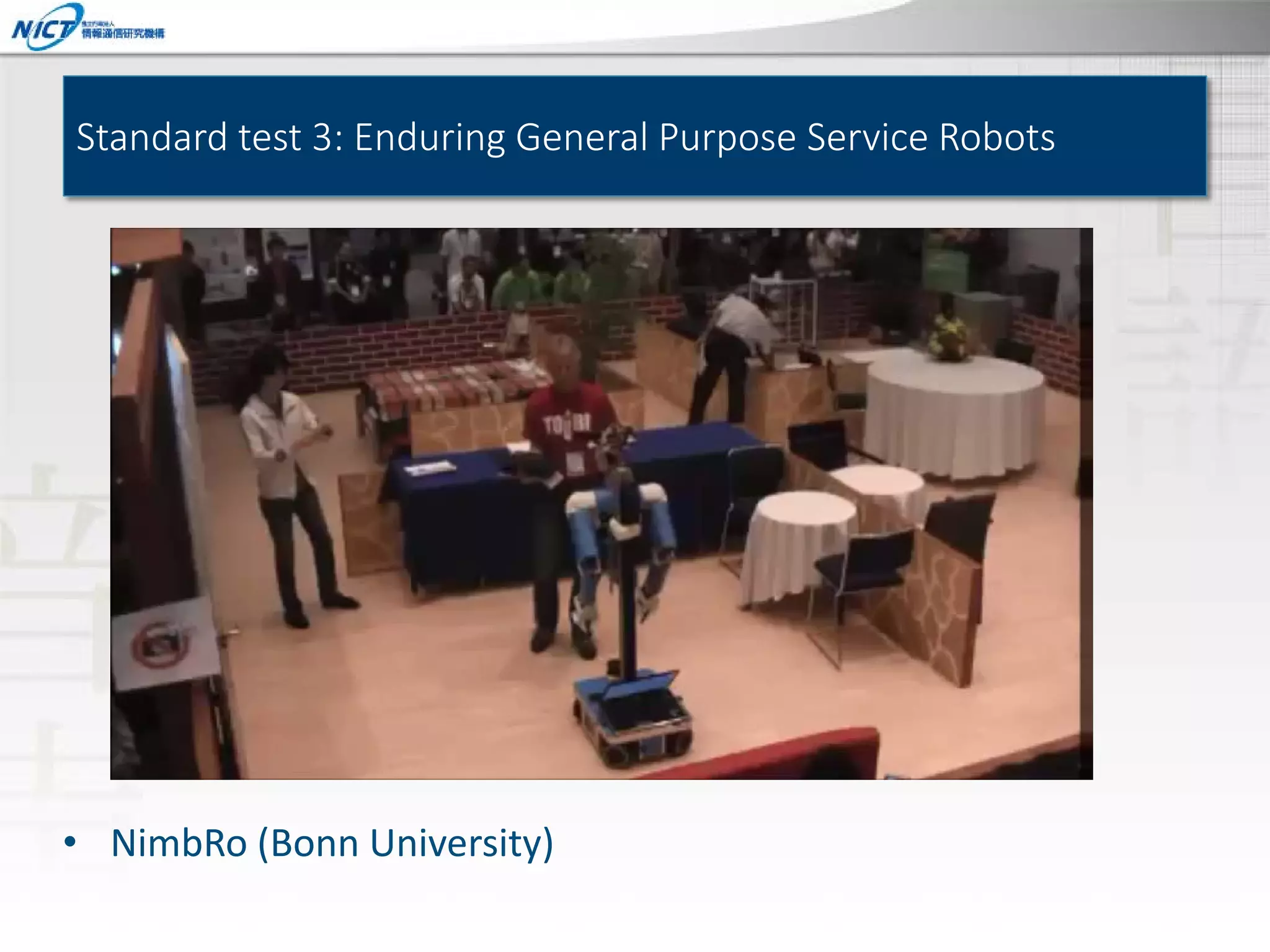
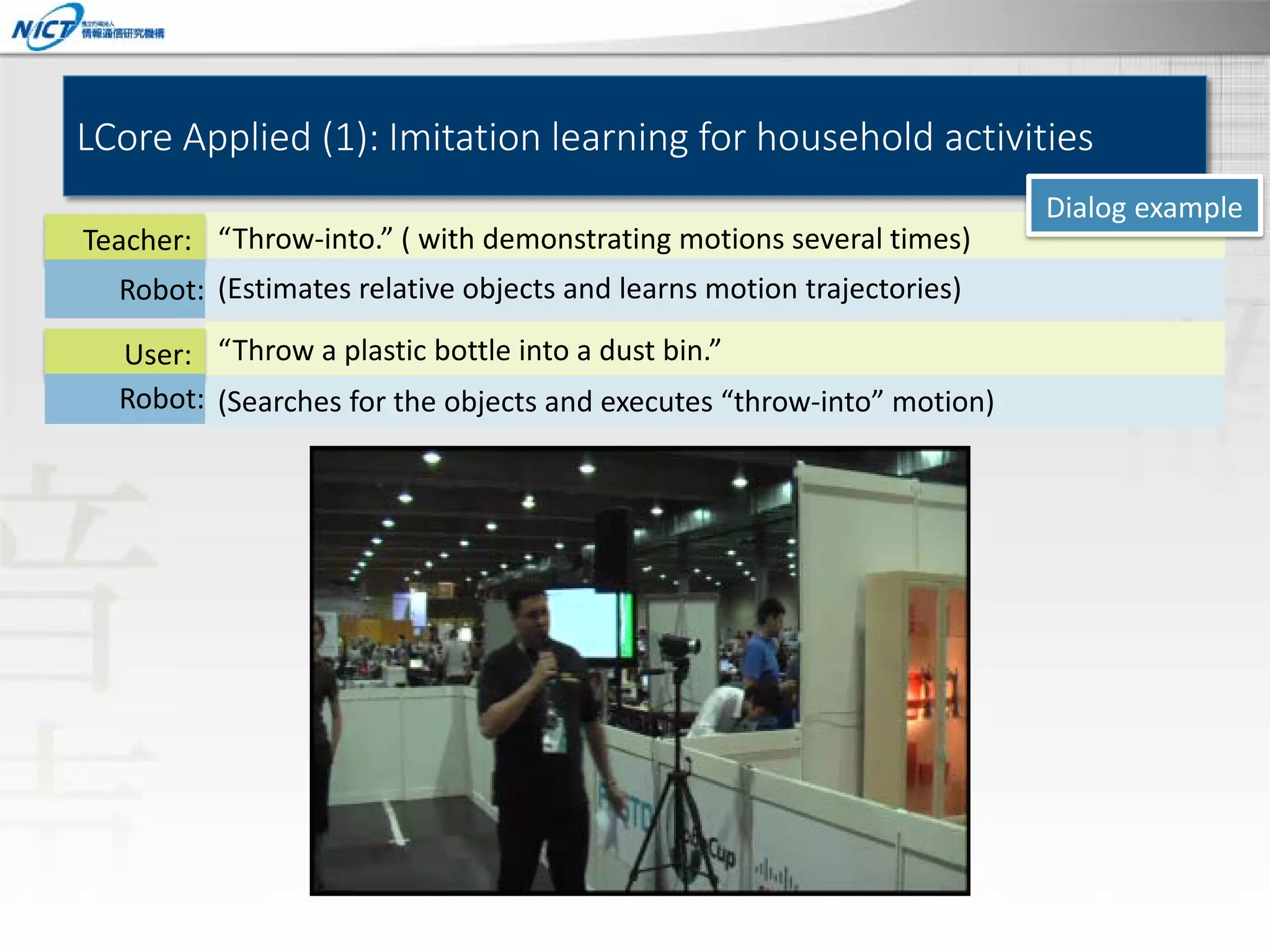
![LCore Applied (2): Learning unknown words
• Difficulty: low phoneme recognition accuracy
• Proposed
– Learns phoneme sequence with waveform
– Voice conversion using EigenVoice Gaussian Mixture Model*[Toda+ 2007]
Evaluation using CMOS metric
• proposed method outperformed baseline
9](https://image.slidesharecdn.com/20131213robocupathome-131213044502-phpapp02/75/Introduction-to-RoboCup-Home-9-2048.jpg)